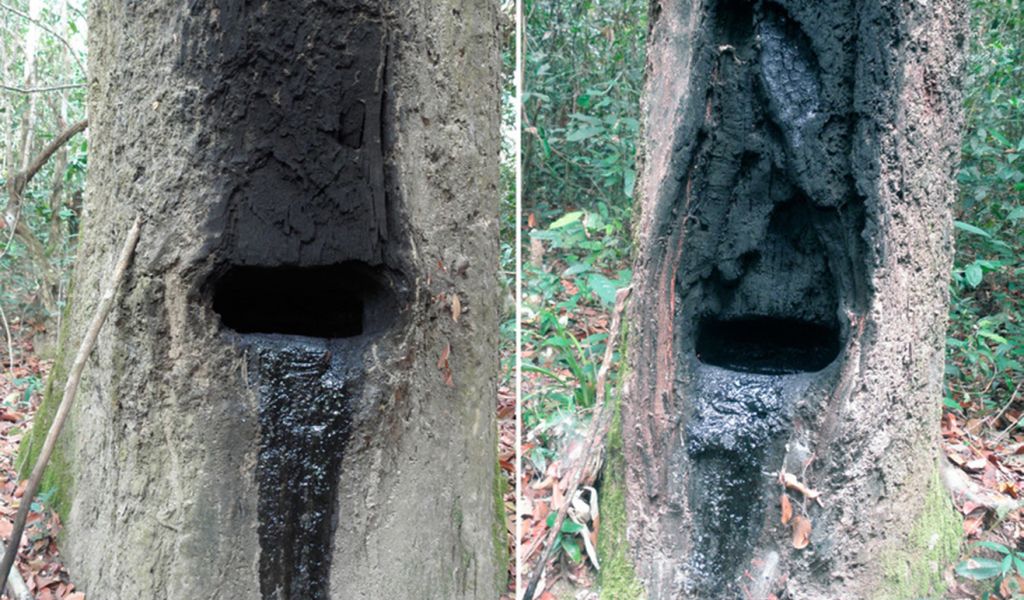ນໍ້າມັນຍາງ / Shorea Dammar
APA 6th ed. ນໍ້າມັນຍາງ / Shorea Dammar. (2021, August 26). Retrieved from https://www.phakhaolao.la/kb/0000012
MLA 8th ed. ນໍ້າມັນຍາງ / Shorea Dammar. Pha Khao Lao, 26 August 2021, https://www.phakhaolao.la/kb/0000012.
Chicago 17th ed. Pha Khao Lao. 2021. "ນໍ້າມັນຍາງ / Shorea Dammar." Published August 26, 2021. https://www.phakhaolao.la/kb/0000012.

Dipterocarpus incanus Roxb.
Dipterocarpus philippinensis Foxw.
Hopea conduplicata Buch.-Ham.
Oleoxylon balsamiferum Wall.
Pterigium costatum Corrêa
Thai: yang na, yang khao, yang daeng, yang wai, yang tang, yang mae nam, yang yuak, yang kung, yang khwai, yang noen, ra loi, loi, ka tin, kha yang, chong, cha tian, chan na, thong lak
Burmese: kanyin-bye
Vietnamese: dua nuoc, dau con rai, dau rai
Cambodian: domchoeu tealtuc, che tiel bangkuey, che tiel bay, che tiel tuk
English: yang oil, gurjan oil
Evergreen Nyang trees are 30-40 m tall, while deciduous Nyang trees are smaller, reaching about 20 m. Nyang Na has a straight, rounded, grey-brown trunk, with a light-yellow bark and red-brown wood. Leaves are 20 cm-35 cm x 8 cm-15 cm and egg-shaped, with a rough texture and a hairy lower blade. The stipule (a small leafy outgrowth at the base of a leaf or stalk) is 3 cm-4 cm long, hairy and falls when the leaf matures. Inflorescences are short and clustered with whitish flowers. The fruit has two long and three short wings, which are red when young and brown when mature. Its total length is 3 cm-15 cm. Sometimes round galls occur on twigs.
Nyang oil serves as a varnish or lacquer for timber and in handicrafts, or as a sealant for boats. There is some industrial use for ink, paints and wax production, and in producing balsam oil as a perfume base. It is also used in traditional medicine to protect feet against the effects of working long hours in rice paddy water. Locally this oleoresin is mixed with sawdust from soft woods or rotten wood and used to produce torches known as Nabong. The oil can be mixed with latex from Ficus spp. to form a glue that traps insects and birds. High up in their branches, dipterocarp trees often shelter beehives, from which local people collect honey. As tapping rights are being removed, the timber is increasingly being used.
